
| William Kershaw's Painted Lady (erroneously: Cynthia kershawii) NYMPHALINAE, NYMPHALIDAE, PAPILIONOIDEA | (donherbisonevans@yahoo.com) and Stella Crossley |
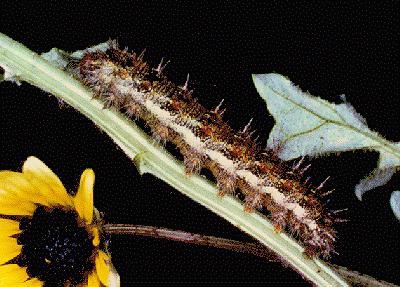
(Photo: courtesy of Merlin Crossley, Melbourne, Victoria)

| William Kershaw's Painted Lady (erroneously: Cynthia kershawii) NYMPHALINAE, NYMPHALIDAE, PAPILIONOIDEA | (donherbisonevans@yahoo.com) and Stella Crossley |

(Photo: courtesy of Merlin Crossley, Melbourne, Victoria)
This species was named in honour of William Kershaw, a taxidermist at the National Museum (now Museum Victoria).
The Caterpillar is brown with two pale yellow lines along each side and is covered in rows of branched spines.
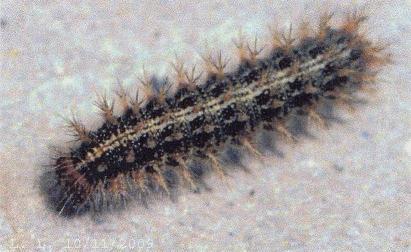
The head may be brown or black. The caterpillar grows to a length of about 3 centimetres.
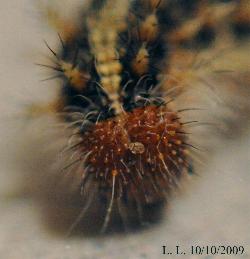
The caterpillar hides by day in a curled leaf or at the foot of the foodplant, feeding at night. It feeds on a number of herbaceus plants from the Daisy family (ASTERACEAE) including the Australian natives :
and the introduced :
and has also been found on
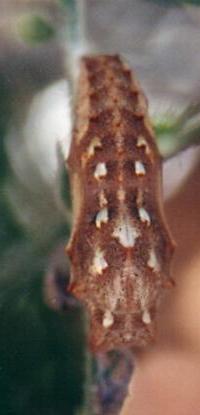 (Photo: courtesy of Laura Levens, Upper Beaconsfield, Victoria) | 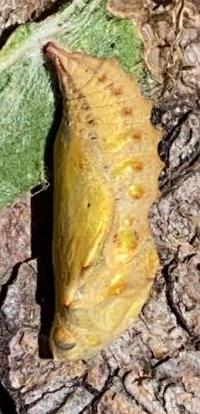 (Photo: courtesy of Reg Watson, Portarlington, Victoria) |
The pupae vary from brown to gold, with darker metallic silver or gold markings, including pairs of metallic-looking dots on the wings. The pupa is often suspended vertically from a cremaster on the underside of foodplant leaf. Its length is about 1 cm. The pupal duration is about two weeks in summer in Melbourne.
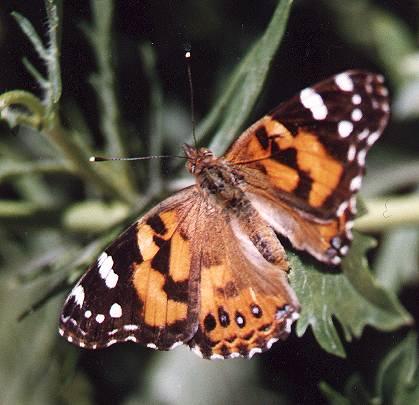
The adult butterflies have a wing span around 5 cms. The adult males and females are similar in appearance. The forewing above is black with orange-red markings, and has four white dots near the apex, and a white bar running inward from the costa. The hindwing above is orange with three or four blue-centred eyespots arranged along a subterminal line.
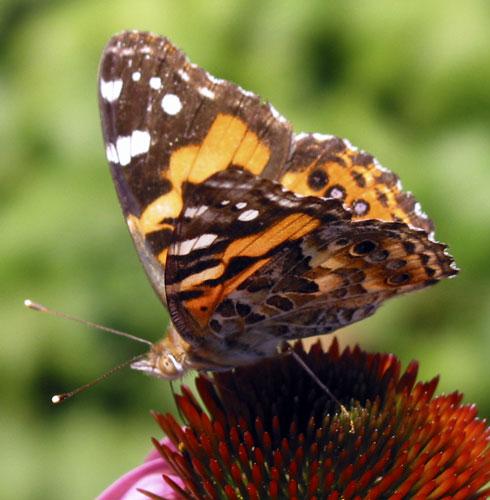
Beneath, the forewing is the same as above, except that it is paler in colour. The underside of each hindwing is brown and cream, with a row of faint subterminal eyespots. The wingspan is about 5 cms.
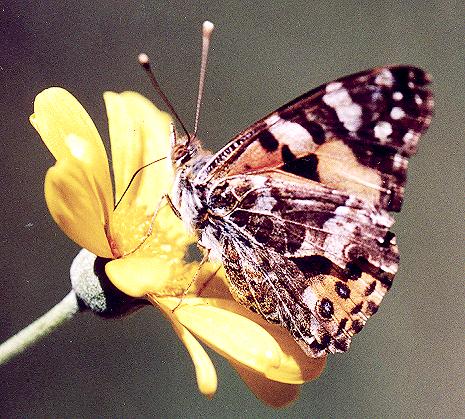
Note that the adults have only four legs, and have a long haustellum with which they can suck nectar from flowers.
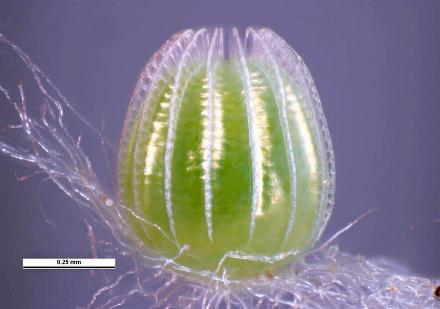
The female lays her eggs singly on a leaf of a food plant. She settles on a leaf, positions herself carefully, then deposits the egg in the centre of the leaf. It is easy to find the eggs once this behaviour is understood. The eggs are barrel shaped with prominent ribs, and have a diameter of about 0.5 mm. The main egg is green, and the ribs white. The eggs we have taken have hatched in about three days.
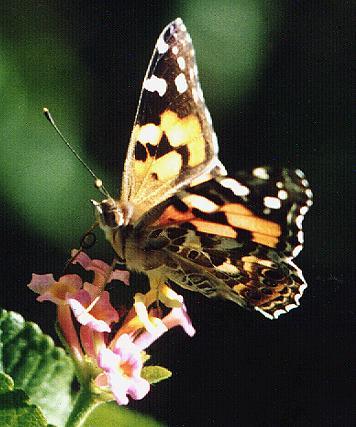
The whole life cycle is fifty three days in summer in Melbourne. The butterfly is notable for its migrations during late winter and early spring from northern regions on the east coast of Australia towards the south-west, particularly in the Sydney area.
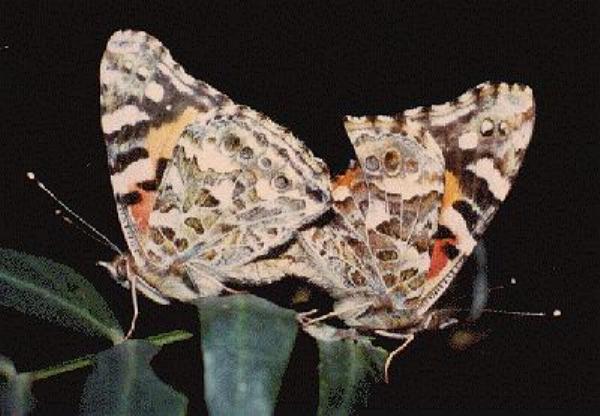
The species has been found across Australasia, including:
as well as in Australia, in
Further reading :
Michael F. Braby,
Butterflies of Australia,
CSIRO Publishing, Melbourne 2000, vol. 2, pp. 579-580.
Frank Jordan & Helen Schwencke,
Create More Butterflies : a guide to 48 butterflies and their host-plants
Earthling Enterprises, Brisbane, 2005, pp. 5, 58, 71.
Frederick McCoy,
The Australian Representative of Cynthia cardui,
Annals and Magazine of Natural History,
Volume 4, Part 1 (1868), p. 76.
 caterpillar |  butterflies |  Lepidoptera |  moths |  caterpillar |
(updated 9 May 2010, 23 October 2025)